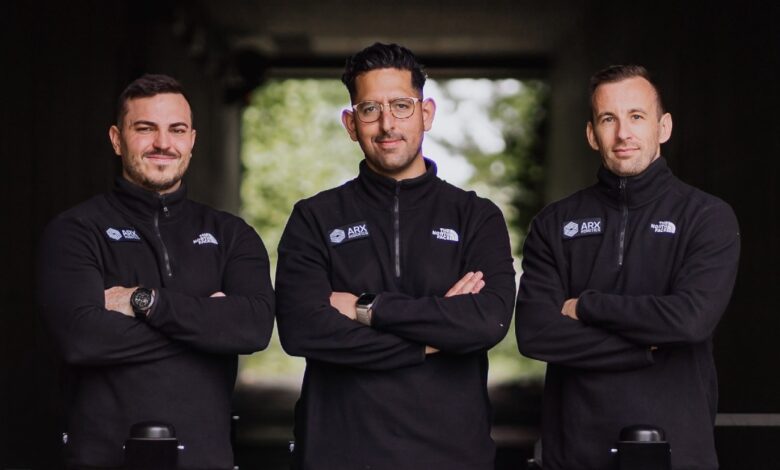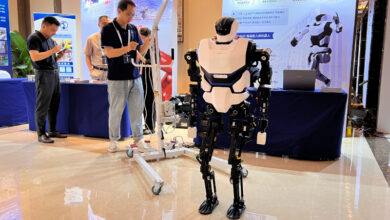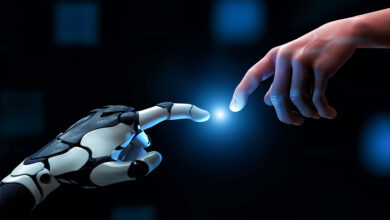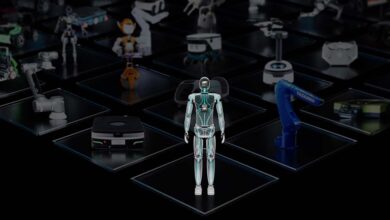ARX Robotics raises €9M with NATO support to future-proof European armed forces for robotic warfare

Munich-based ARX Robotics, a company specialising in scalable robotic systems for diverse applications, has closed its seed funding round at €9M. This is the largest seed round to date for a European defence tech company.
ARX Robotics was founded by a team of soldiers-turned-entrepreneurs, including Marc Wietfeld, Stefan Röbel, and Maximilian Wied.
From years of military expertise, engineering skills, and business acumen, the founding team brings a blend of skills to transform the robotics industry.
ARX claims to contribute to European tech resilience and sovereignty and will use the funds to expand its team and scale production capabilities in Europe.
Investors supporting ARX Robotics
The investment was led by the NATO Innovation Fund and supported by Discovery Ventures and Project A Ventures.
Chris O’Connor, NATO Innovation Fund, says, “We are honoured to support ARX and to help them scale production across Europe. As the need to prepare for a future of unmanned warfare continues, ground autonomy remains a difficult problem to solve.”
“Informed by insights from serving in the armed forces, the team at ARX has developed a leading, cost-effective, modular ground system that can be mass-produced and easily deployed in defence, humanitarian crises, and beyond.”
Uwe Horstmann of Project A Ventures, adds, “We believed in ARX’s potential early on when we supported their ideation process in our Studio and subsequently led their pre-seed round.”
“Autonomous robots will be a game changer in terms of increasing safety, efficiency and capabilities. The team has demonstrated a remarkable ability to address robust and modular ground robotics at scale in dual-use scenarios for both government and civil customers.”
Building robotic systems for defence and commercial applications
ARX Robotics claims to address a critical need in European and Western Allies’ defence infrastructure by introducing mass autonomous unmanned systems to support and protect armed forces amidst technological changes.
Central to ARX’s solution is the GEREON unmanned ground vehicle (UGV) series. This feature allows for easy customisation to suit a range of defence scenarios, from live fire training and simulation to transport and medical evacuation, as well as specialised sensor applications in reconnaissance missions.
The GEREON series offers flexibility through its mission-specific use cases, accommodating various add-on and payload solutions to meet operational needs.
Marc Wietfeld, CEO and co-founder of ARX, says, “The armies of Western democracies are not prepared for robotic warfare.”
“To significantly enhance the capabilities of our armed forces and serve as a force multiplier, an interconnected critical mass of autonomous unmanned ground systems is required. These systems must be simple to manufacture in a decentralised manner and deployable in critical mass.”
“ARX is committed to contributing to European technological sovereignty by scaling up the production of these systems, generating software-defined systems, and developing adaptive hardware to meet the demand for robust and autonomous unmanned systems.”
Brief about the GEREON robots
GEREON robots, already deployed and tested by European armies, including Germany, Austria, Switzerland, Hungary, and Ukraine, enhance soldiers’ situational awareness in training scenarios and operational deployments.
ARX Robotics’ robots are not limited to defence; they also serve in commercial and humanitarian roles, bolstering workforce safety and efficiency. They autonomously monitor critical infrastructure, provide transport in disaster zones, and navigate rough terrain.
ARX Robotics integrates hardware, modular design, and advanced software to produce cost-effective unmanned ground systems for diverse applications.
The company’s adaptable platforms allow field configuration in minutes, without tools. ARX’s software employs off-the-shelf hardware components and artificial intelligence, enabling the creation of intelligent, networked robots. Software updates are conducted over-the-air.



